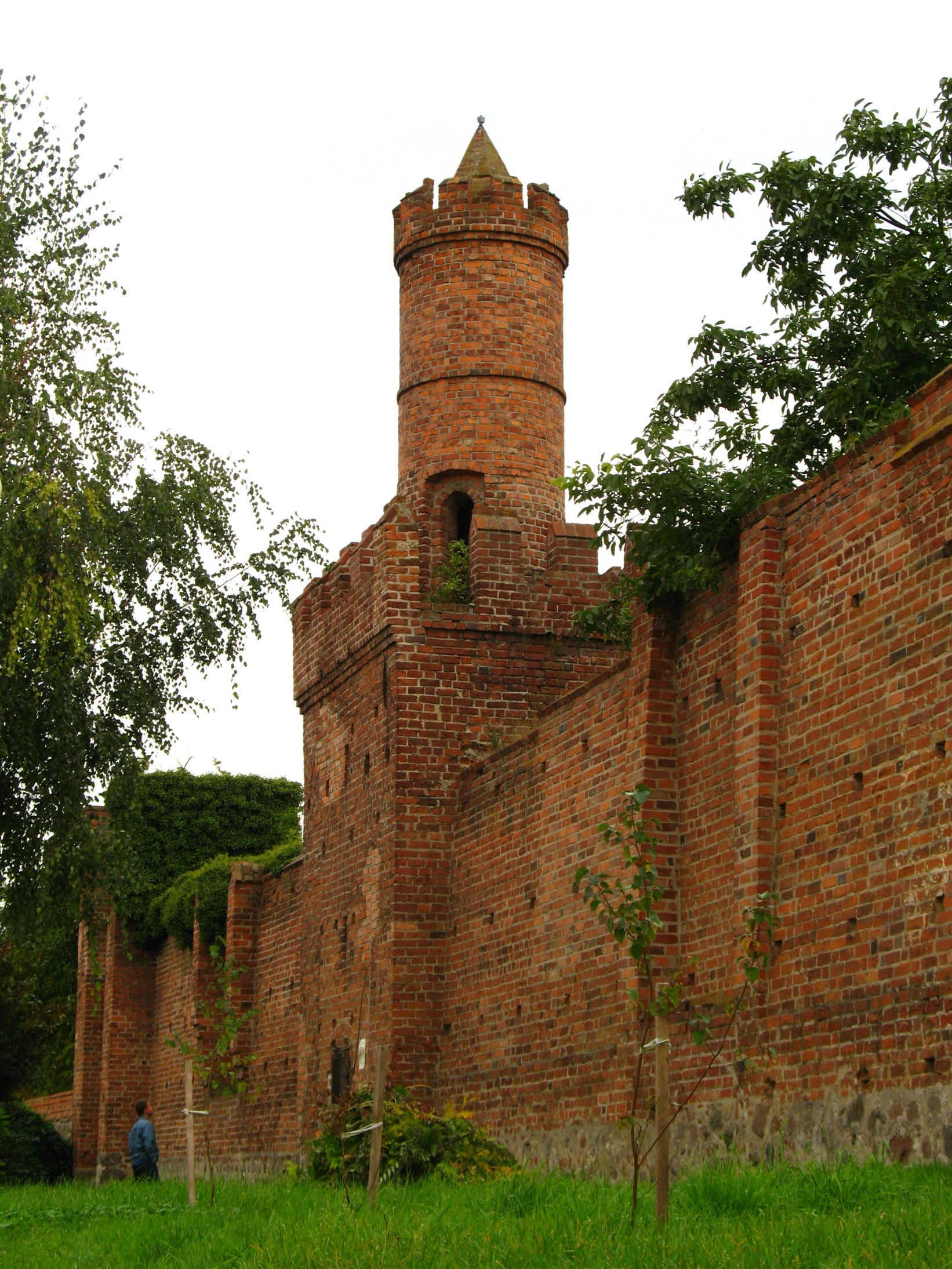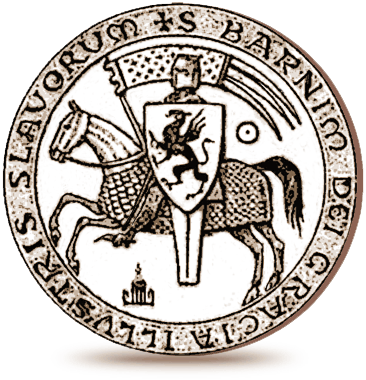|
Pyrzyce
Pyrzyce (; ) is a town in Pomerania, north-western Poland. As of 2007, it had 13,331 inhabitants. It is the capital of the Pyrzyce County in West Pomeranian Voivodeship. The town emerged from an early medieval tribal stronghold, which eventually became a castellan seat and a center of grain trade. Pyrzyce has largely preserved medieval defensive walls with several gates and towers, several medieval churches and a regional museum. It hosts one of the oldest geothermal plants in Poland. History An anonymous medieval document of about 850, called Bavarian Geographer, mentions the tribe of Prissani having 70 strongholds (''Prissani civitates LXX''). The territory became part of the emerging Polish state under Mieszko I around 967. The settlement was first mentioned in 1124 by bishop Otto von Bamberg, who baptized the first Pomeranians here, a task entrusted to him by Polish monarch Bolesław III Wrymouth. It was one of the first towns of Western Pomerania to convert to Christian ... [...More Info...] [...Related Items...] OR: [Wikipedia] [Google] [Baidu] |
Gmina Pyrzyce
__NOTOC__ Gmina Pyrzyce is an urban-rural gmina (administrative district) in Pyrzyce County, West Pomeranian Voivodeship, in north-western Poland. Its seat is the town of Pyrzyce, which lies approximately south-east of the regional capital Szczecin. The gmina covers an area of , and as of 2006 its total population is 19,515 (out of which the population of Pyrzyce amounts to 12,642, and the population of the rural part of the gmina is 6,873). Villages Apart from the town of Pyrzyce, Gmina Pyrzyce contains the villages and settlements of Brzesko, Brzezin, Czernice, Giżyn, Górne, Krzemlin, Krzemlinek, Letnin, Mechowo, Mielęcin, Młyny, Nieborowo, Nowielin, Obromino, Okunica, Ostrowica, Pstrowice, Ryszewko, Ryszewo, Rzepnowo, Stróżewo, Turze and Żabów. Neighbouring gminas Gmina Pyrzyce is bordered by the gminas of Banie, Bielice, Kozielice, Lipiany, Myślibórz, Przelewice, Stare Czarnowo and Warnice. ReferencesPolish official population figures 2 ... [...More Info...] [...Related Items...] OR: [Wikipedia] [Google] [Baidu] |
Pyrzyce County
__NOTOC__ Pyrzyce County () is a unit of territorial administration and local government (powiat) in West Pomeranian Voivodeship, north-western Poland. It came into being on January 1, 1999, as a result of the Polish local government reforms passed in 1998. Its administrative seat and largest town is Pyrzyce, which lies south-east of the regional capital Szczecin. The only other town in the county is Lipiany, lying south of Pyrzyce. The county covers an area of . As of 2006 its total population is 39,931, out of which the population of Pyrzyce is 12,642, that of Lipiany is 4,124, and the rural population is 23,165. Neighbouring counties Pyrzyce County is bordered by Stargard County to the north, Myślibórz County to the south and Gryfino County to the west. Administrative division The county is subdivided into six gmina The gmina (Polish: , plural ''gminy'' ) is the basic unit of the administrative division of Poland, similar to a municipality. , there were 2,479 gminy ... [...More Info...] [...Related Items...] OR: [Wikipedia] [Google] [Baidu] |
Duchy Of Pomerania
The Duchy of Pomerania (; ; Latin: ''Ducatus Pomeraniae'') was a duchy in Pomerania on the southern coast of the Baltic Sea, ruled by dukes of the House of Pomerania (''Griffins''). The country existed in the Middle Ages between years 1121–1160, 1264–1295, 1478–1531, and 1625–1637. The duchy originated from the realm of Wartislaw I, a Slavic Pomeranian duke, and was extended by the Lands of Schlawe and Stolp in 1317, the Principality of Rügen in 1325, and the Lauenburg and Bütow Land in 1455. During the High Middle Ages, it also comprised the northern Neumark and Uckermark areas as well as Circipania and Mecklenburg-Strelitz. The Duchy of Pomerania was established as a vassal state of Poland in 1121, which it remained until the fragmentation of Poland after the death of Polish ruler Bolesław III Wrymouth in 1138. Afterwards the Dukes of Pomerania were independent, and later were vassals of the Duchy of Saxony from 1164 to 1181, of the Holy Roman Empire from 1 ... [...More Info...] [...Related Items...] OR: [Wikipedia] [Google] [Baidu] |
Czarnowo, West Pomeranian Voivodeship
Czarnowo is a village in the administrative district of Gmina Kozielice, within Pyrzyce County, West Pomeranian Voivodeship, in north-western Poland. In 1322 the village was granted to the town of Pyrzyce by Pomeranian Dukes Otto I and Barnim III Barnim III the Great (14 August 1368) was a Pomeranian duke from the House of Griffin. Life He ruled Pomerania-Stettin in the years 1344–1368, although he had been a co-regent of his father Otto I since 1320, taking a prominent part in the defen .... References Villages in Pyrzyce County {{Pyrzyce-geo-stub ... [...More Info...] [...Related Items...] OR: [Wikipedia] [Google] [Baidu] |
Conversion Of Pomerania
Medieval Pomerania was converted from Slavic paganism to Christianity under Bolesław III Wrymouth, by bishop Otto of Bamberg in 1124 and 1128 (Duchy of Pomerania), and in 1168 by Absalon (Principality of Rügen). Earlier attempts at Christianization, undertaken since the 10th century, failed or were short-lived. The new religion stabilized when the Pomeranian dukes founded several monasteries and called in Christian, primarily German settlers during the Ostsiedlung. The first Pomeranian abbey was founded in 1153 at the site where the first Christian duke of Pomerania, Wartislaw I, was slain by a pagan. The Duchy of Pomerania was organized by the Roman Catholic Church in the Bishopric of Cammin in 1140. Pomeranian areas not belonging to the duchy at this time were attached to the dioceses of Włocławek (East), Roskilde (Rügen) and Schwerin (West). Bishopric of Havelberg (948-983) When the Bishopric of Havelberg was founded in 948, the constitution document mentions the ar ... [...More Info...] [...Related Items...] OR: [Wikipedia] [Google] [Baidu] |
West Pomeranian Voivodeship
West Pomeranian Voivodeship is a Voivodeships of Poland, voivodeship (province) in northwestern Poland. Its capital and largest city is Szczecin. Its area equals , and in 2021, it was inhabited by 1,682,003 people. It was established on 1 January 1999, out of the former Szczecin Voivodeship (1975–1998), Szczecin and Koszalin Voivodeship (1975–1998), Koszalin Voivodeships and parts of Gorzów Voivodeship, Gorzów, Piła Voivodeship, Piła and Słupsk Voivodeships, pursuant to the Polish local government reforms adopted in 1998. It borders on Pomeranian Voivodeship to the east, Greater Poland Voivodeship to the southeast, Lubusz Voivodeship to the south, the Germany, German States of Germany, federal-states of Mecklenburg-Vorpommern, Mecklenburg-West Pomerania and Brandenburg to the west, and the Baltic Sea to the north.Ustawa z dnia 24 lipca 1998 r. o wprowadzeniu zasadniczego trójstopniowego podziału terytorialnego państwa (Dz.U. z 1998 r. nr 96, poz. 603). Geography and ... [...More Info...] [...Related Items...] OR: [Wikipedia] [Google] [Baidu] |
Prissani
The Prissani or Pyritzans () were a medieval tribe in Pomerania. They were first mentioned as "Prissani" with 70 civitas by the Bavarian Geographer, ca. 845.Johannes Hoops, Herbert Jankuhn, Heinrich Beck, Reallexikon der germanischen Altertumskunde Band 23, Walter de Gruyter, 2003, p.261, They are associated with the Pomeranians, and were based in the lower Oder region around the modern town of Pyrzyce (Pyritz).Jan M Piskorski, Pommern im Wandel der Zeiten, p.30, The mention in the Bavarian Geographer is the only written record referring to the tribe. In the late 10th century, the Polish dukes Mieszko I and Bolesław I Chrobry subdued parts of Pomerania, but did not succeed to subdue the lower Oder region.Jan M Piskorski, Pommern im Wandel der Zeiten, p.31, In 1121/22, the Polish duke Bolesław III Wrymouth conquered the area along with the Duchy of Pomerania under Wartislaw I.Jan M Piskorski, Pommern im Wandel der Zeiten, p.36, The tribe was subsequently Christianized, ... [...More Info...] [...Related Items...] OR: [Wikipedia] [Google] [Baidu] |
Polish Car Number Plates
Vehicle registration plates of Poland indicate the region of registration of the vehicle given the number plate. Law According to Polish law, the registration plate is tied to the vehicle, not the owner. There is no possibility for the owner to keep the licence number for use on a different car, even if it's a cherished registration. The licence plates are issued by the powiat (county) of the vehicle owner's registered address of residence, in the case of a natural person. If it is owned by a legal person, the place of registration is determined by the person's address. Vehicles leased under operating leases and many de facto finance leases will be registered at the address of the lessor. When a vehicle changes hands, the new owner must apply for new vehicle registration document bearing their name and registered address. The new owner may obtain a new licence plate although it is not necessary. In such a situation the licence plates are usually carried over to the new owne ... [...More Info...] [...Related Items...] OR: [Wikipedia] [Google] [Baidu] |
Pomerania
Pomerania ( ; ; ; ) is a historical region on the southern shore of the Baltic Sea in Central Europe, split between Poland and Germany. The central and eastern part belongs to the West Pomeranian Voivodeship, West Pomeranian, Pomeranian Voivodeship, Pomeranian and Kuyavian-Pomeranian Voivodeship, Kuyavian-Pomeranian voivodeships of Poland, while the western part belongs to the German states of Mecklenburg-Western Pomerania and Brandenburg. Pomerania's historical border in the west is the Mecklenburg-Western Pomeranian border ''Urstromtal'', which now constitutes the border between the Mecklenburgian and Pomeranian part of Mecklenburg-Western Pomerania, while it is bounded by the Vistula River in the east. The easternmost part of Pomerania is alternatively known as Pomerelia, consisting of four sub-regions: Kashubia inhabited by ethnic Kashubians, Kociewie, Tuchola Forest and Chełmno Land. Pomerania has a relatively low population density, with its largest cities being Gdańsk ... [...More Info...] [...Related Items...] OR: [Wikipedia] [Google] [Baidu] |
Bolesław III Wrymouth
Bolesław III Wrymouth (; 20 August 1086 – 28 October 1138), also known as Boleslaus the Wry-mouthed, was the duke of Lesser Poland, Silesia and Sandomierz between 1102 and 1107 and over the whole of Poland between 1107 and 1138. He was the only child of Duke Władysław I Herman and his first wife, Judith of Bohemia. Bolesław began to rule in the last decade of the 11th century, when the central government in Poland was significantly weakened. Władysław I Herman fell under the political dependence of the Count palatine Sieciech, who became the ''de facto'' ruler of the country. Backed by their father, Boleslaw and his half-brother Zbigniew of Poland, Zbigniew finally expelled Sieciech from the country in 1101, after several years of fighting. After the death of Władysław I Herman in 1102, two independent states were created, ruled by Bolesław and Zbigniew. Bolesław sought to gain Pomerania which caused an armed conflict between the brothers, and forced Zbigniew to flee ... [...More Info...] [...Related Items...] OR: [Wikipedia] [Google] [Baidu] |
Barnim I, Duke Of Pomerania
Barnim I the Good ( 1217/1219 – 13 November 1278), from the Griffin dynasty, was a Duke of Pomerania (''ducis Slauorum et Cassubie'') from 1220 until his death. Life Son of Duke Bogislaw II and Miroslava of Pomerelia, he succeeded to the Duchy of Pomerania-Stettin upon his father's death in 1220; he had, however, to share the rule of Pomerania with his cousin Wartislaw III, who resided at Demmin. Because he was minor when his father died, until about 1226 his lands were under the regency of his mother Miroslawa from the Pomerelian Samborides dynasty. At first still a Danish fief, the Pomeranian lands fell back to the Holy Roman Empire after the victory of several North-German princes at the 1227 Battle of Bornhöved. Emperor Frederick II of Hohenstaufen in 1231 put the Duchy of Pomerania under the suzerainty of the Ascanian margraves of Brandenburg, disregarding the tenure of the Griffin dynasty, and thereby fueling the long-term Brandenburg–Pomeranian conflict. After his ... [...More Info...] [...Related Items...] OR: [Wikipedia] [Google] [Baidu] |





